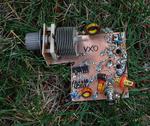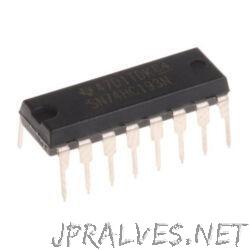Other

“The MK1 CPU is composed of several modules, all connected trough a common 8-bit BUS, the status of each module is shown by dedicated LEDs. The clock module is designed to allow step-by-step execution; in automatic mode the clock speed …

“I like making simple component-level radios. This Fall, I rekindled my love for making transistor radios and hope to slowly blog some circuits and fun. I’m warning you now — these circuits hearken the 1970s and 80s, SSD, EMRFD, old …

“In EMRFD, 4.10, Wes provides the schema for a versatile VXO - extending frequency synthesizer. Although, I referred him to Wes for help, a reader asked me some questions and I ended up designing some pieces for him. In order …

“Radio astronomy offers much fun + learning for the radio homebuilder — example topics include how to design and make antennas, LNAs, receivers, and frequency synthesizers from HF to microwave. Further we may craft op-amp analog integrators to remove background noise, and …

